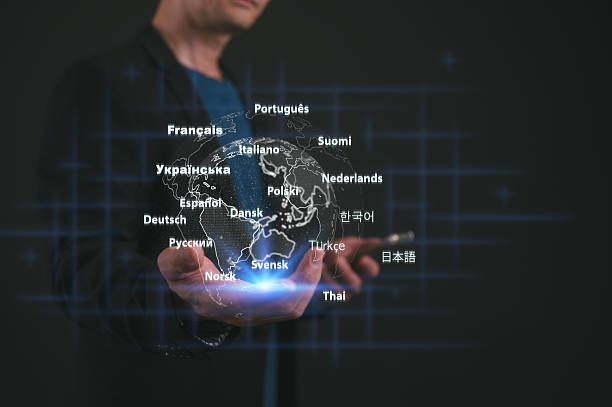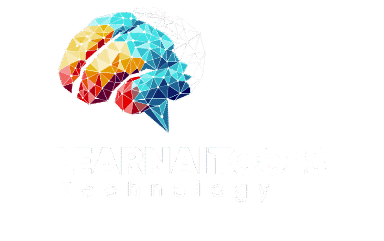
Big data AI analytics visualization technology with businessman analyzing information structure on virtual screen, machine learning to extract AI for Languages: Transforming Communication and Learning Worldwide
AI for Languages is reshaping the way humans communicate, learn, and interact with technology. By leveraging artificial intelligence, natural language processing, and machine learning, AI tools are now capable of translating, understanding, and generating human languages with remarkable accuracy. This article explores the latest trends, applications, benefits, challenges, and future potential of AI for Languages in education, business, translation, and global communication.
Why AI for Languages Is a Game-Changer
AI for Languages is revolutionizing global communication by breaking down language barriers. Businesses, educators, and governments can now interact with diverse audiences in multiple languages seamlessly. AI-driven tools enable accurate translations, voice recognition, and language learning assistance. This technology is particularly impactful in multilingual societies, remote learning, international business, and global collaborations.
The use of AI for Languages also ensures inclusivity. Individuals with limited proficiency in certain languages can now access education, information, and digital services in their native language. This democratization of language access is crucial for social, educational, and economic development worldwide.

AI for Languages in Business Communication
Transforming business communication and global operations. Companies can now communicate with international clients, partners, and employees in real-time, reducing misunderstandings and improving collaboration. AI-powered translation services, multilingual chatbots, and automated content localization help businesses expand into global markets with ease.
Small businesses also benefit, as AI tools provide cost-effective ways to create multilingual content, marketing campaigns, and customer support systems. By integrating AI for Languages into workflows, companies enhance productivity and ensure efficient, culturally-aware communication.
Languages in Education
Languages is revolutionizing language learning and educational accessibility. Students can access personalized learning platforms that adapt to their pace and proficiency level. AI-powered applications provide instant translations, pronunciation guidance, grammar correction, and interactive exercises for multiple languages.
Teachers benefit from automated grading of language assignments, lesson planning, and insights into student progress. AI for Languages is particularly valuable in multilingual classrooms, where students may need assistance in their native language, ensuring equitable access to quality education.
Languages in Translation and Interpretation
Languages is at the forefront of translation and interpretation technologies. Neural machine translation models can now convert text and speech between languages with high accuracy and contextual understanding. This is critical for international conferences, diplomatic communications, legal documentation, and digital content localization.
By integrating AI for Languages into translation tools, companies, governments, and content creators save time and reduce errors. Real-time translation features in video calls and meetings also foster seamless global collaboration.
Languages in Healthcare
Languages plays a significant role in healthcare communication. Medical professionals can now interact with patients who speak different languages without the need for human translators. AI-powered tools provide accurate translation of patient instructions, medical records, and telemedicine consultations.
This technology is particularly valuable in emergency situations, cross-border healthcare, and multilingual regions. By improving communication, AI for Languages enhances patient care, reduces errors, and ensures equitable access to medical services.
Languages for Developers and Startups
Languages empowers developers and startups to innovate rapidly. Open-source frameworks and pre-trained language models allow the creation of applications for translation, sentiment analysis, voice recognition, and content generation. Startups can develop tools for education, business communication, and accessibility without heavy investments.
This accessibility fosters innovation, encourages experimentation, and levels the playing field for smaller teams and developers, enabling them to compete with larger corporations in language technology solutions.
Community Collaboration in AI for Languages
Languages thrives on global collaboration. Developers, researchers, and language experts contribute to open-source projects, improving AI models, datasets, and accuracy. Community-driven projects enhance transparency, fairness, and adaptability of AI tools.
Collaborative platforms also provide resources for education, research, and multilingual communication, ensuring that AI for Languages continues to evolve inclusively and ethically.
Challenges in AI for Languages
Languages faces challenges such as data privacy, linguistic biases, and technical complexity. AI models trained on limited datasets may misinterpret context or produce biased translations. Ensuring ethical deployment, maintaining multilingual datasets, and addressing resource limitations in low-income regions remain key concerns.
Despite these challenges, AI for Languages continues to advance, driven by innovation, collaboration, and increasing demand for global communication solutions.
Future of AI for Languages
Languages is set to revolutionize communication, education, and business globally. Emerging technologies like real-time voice translation, sentiment-aware chatbots, and multilingual AI assistants will make human-computer interaction more natural and inclusive. Integration with cloud computing, mobile devices, and edge AI will enhance accessibility, performance, and adoption.
The future of AI for Languages promises a world where language barriers are minimized, global collaboration is seamless, and technology empowers individuals to communicate effectively across cultures.
Conclusion: AI for Languages Driving Global Connectivity
AI for Languages is more than a technological advancement—it is a transformative tool that connects people, cultures, and businesses. From education and healthcare to business and translation, AI for Languages is enabling faster, more accurate, and inclusive communication worldwide.
Understanding and leveraging AI for Languages is essential for anyone seeking to thrive in an interconnected world. To explore more insights, guides, and tools on AI, visit Learn Ai Tools. By breaking language barriers, AI for Languages fosters innovation, inclusivity, and global collaboration, shaping the future of human communication.




